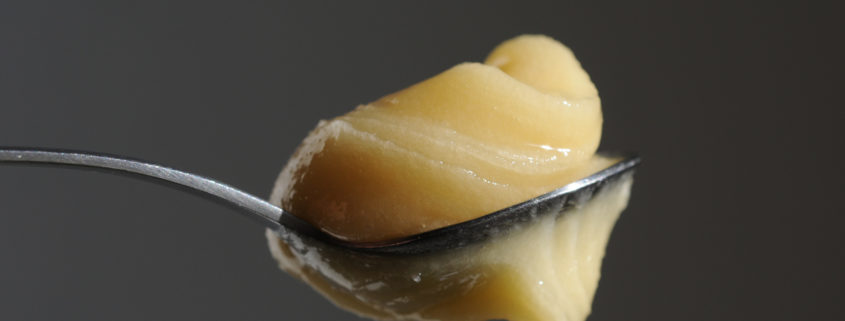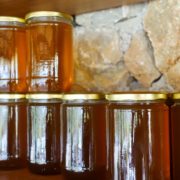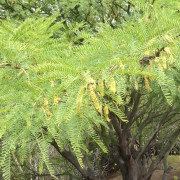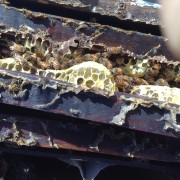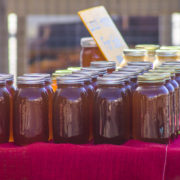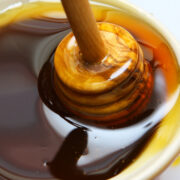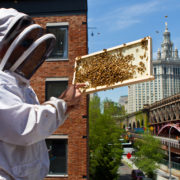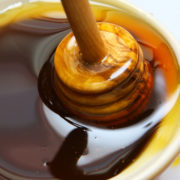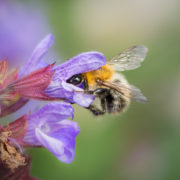Why Does Honey Crystalize?
As both beekeepers and honey lovers, we’ve all run into jars of honey that have turned from liquid gold into a solid or semi-solid chunk of crystal. Whether this happens in a person’s pantry or on a store’s shelf, honey consumers sometimes believe that something must have gone wrong with the honey to turn it into this strange state.
Actually, the tendency for honey to crystalize is a perfectly normal feature of high-quality honey. In fact, if honey does not crystalize, it can often be seen as a red flag that perhaps the honey has been cut with corn syrup, or that the honey has been overheated to excessive temperatures, or in some other way mistreated in its processing.
Honey primarily consists of two types of sugar – fructose and glucose – and water. The two sugars comprise about 70% of the honey, and the water slightly less than 20%, with the remaining 10% consisting of various other kinds of sugars, minerals and enzymes. We like to think of honey as a bee product, but it is actually more of a plant product, as the plant is largely responsible for the chemical composition of the honey.
The issue with honey crystallization lies with the ratio of fructose to glucose within the various plant nectars. If the nectar contains a higher ratio of fructose to glucose, then the honey is less likely to crystalize. On the other hand, if the nectar contains a higher ratio of glucose, it is more likely to crystalize rapidly.
It is the glucose that is unstable when dissolved in water. Glucose is just not that soluble in water, and therefore needs more water to stay dissolved and liquid than the little amount of water that honey contains.
Some of the more common types of honey that contain high glucose levels, and therefore crystalize more rapidly are:
- Alfalfa
- Clover
- Mesquite
- Star Thistle
- Sunflower
On the other hand, some types of honey that contain low glucose levels, and crystalize more slowly, are:
There are other factors too that cause honey to crystalize. Higher temperatures tend to keep the sugars dissolved (just like higher temperatures on a stove top more easily dissolve sugar and water mixtures). Cooler temperatures accelerate crystallization; however very cold temperatures (at least below 50°F) will slow crystallization due to thickening the honey and making it more viscous.
Also, the less filtered the honey is, the more likely it is to crystalize. This is because the impurities in the honey, such as pollen and tiny pieces of wax give the crystals a foothold to grab on to.
Once the crystallization gets started, it’s like a runaway train. It keeps going with each crystal giving another a foothold to attach to. The whole process can be reversed, however, simply by reheating the honey. Once the temperature of the honey become hot enough (usually 105°F is enough) the sugars dissolve again and the honey reverts back to its original liquid state.

